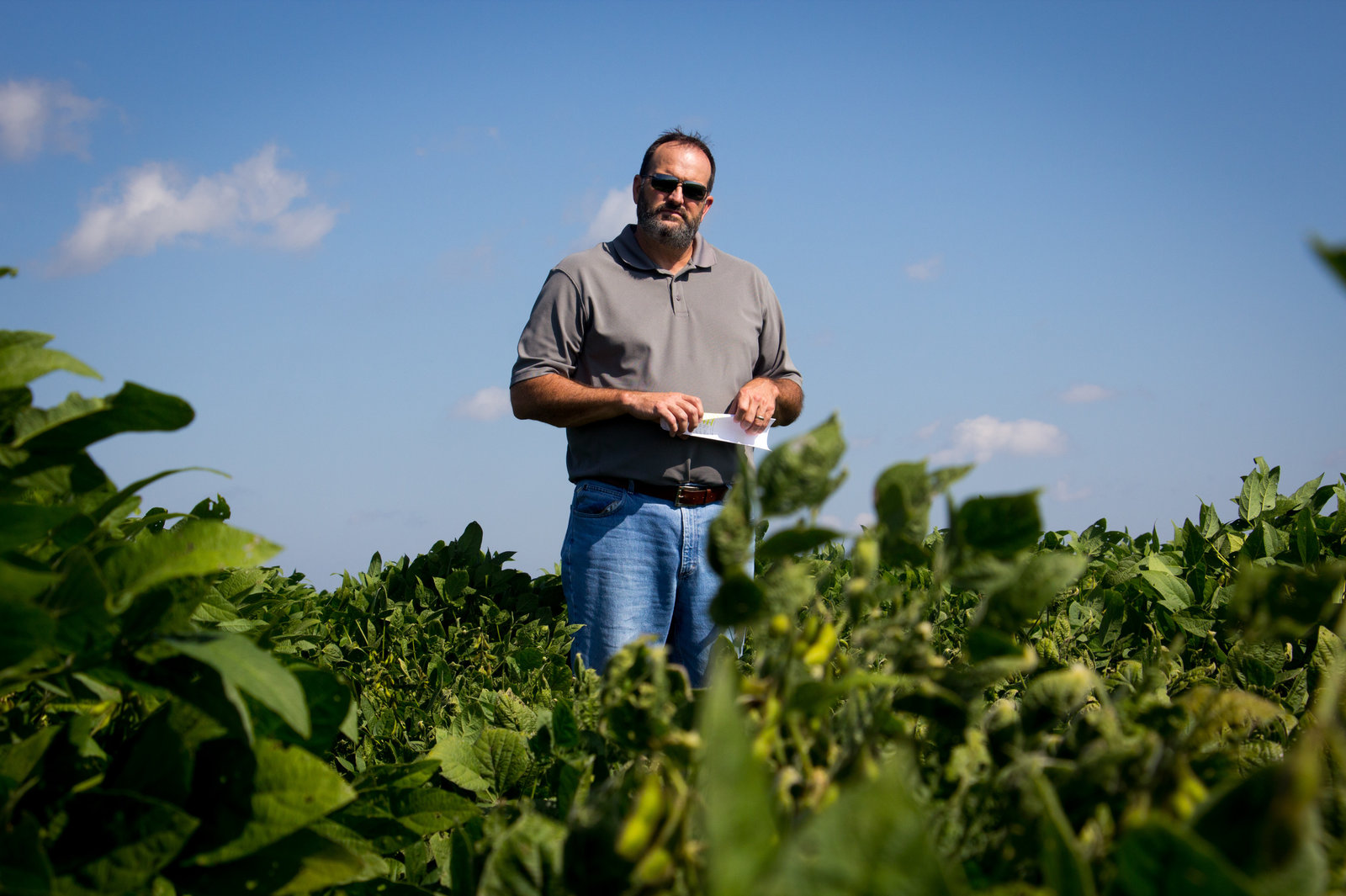The Environmental Protection Agency announced Friday that it will let farmers keep spraying the weedkilling chemical dicamba on Monsanto's new dicamba-tolerant soybeans and cotton. The decision is a victory for the biotech giant and the farmers who want to use the company's newest weedkilling technology.
Farmers across the Midwest and Mid-South have been waiting for the EPA's decision for months ever since it became clear that dicamba was drifting into thousands of fields where it didn't belong and damaging those crops. Some groups have called on the EPA to ban the most troublesome uses of dicamba, following the lead of regulators in Arkansas.
The EPA, however, decided that the problems that occurred this past summer can be solved simply by adding a few new restrictions on how dicamba is used. In the future, applying dicamba will require special training; it can't be applied if the wind speed is greater than 10 mph and farmers will be asked to pay more attention to the risk that dicamba spraying may pose to nearby orchards and vegetable fields.
Farmers have used dicamba for decades, but this past summer, they got permission to use it in a new way, spraying it over the top of soybean and cotton crops that Monsanto has genetically modified to tolerate the chemical. This meant that more dicamba was sprayed, and it was being applied in the heat of summer, which makes chemicals more likely to turn into a vapor and drift.
Scott Partridge, Monsanto's vice president of global strategy, welcomed the EPA's decision. "We're very excited about it," he said. "It directly addresses what we found to be the causes of the off-target movement in 2017, and we think it sets the stage for all growers and applicators to have a positive experience in 2018."

With this green light from the EPA, farmers are expected to plant even more dicamba-tolerant soybeans next summer. According to Partridge, farmers planted about 20 million acres of dicamba-tolerant soybeans this summer. He expects that number to double next year.
